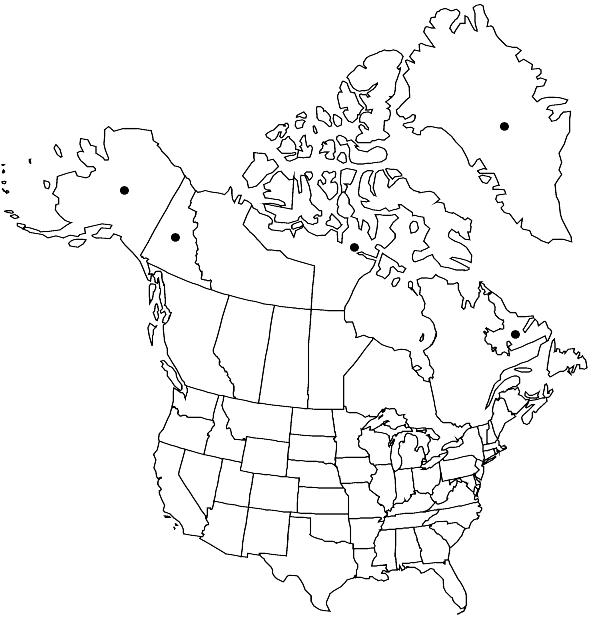Oligotrichum falcatum
Bryologist 61: 115, figs. 1–9. 1958,.
Plants green to silvery green, reddish brown with age. Stems 1.5–2(–5) cm, simple to much branched by innovations. Leaves 1.5–3 mm, asymmetrically ovate to ovate-lanceolate, arcuate-incurved and falcate-secund when wet or dry; costa percurrent, the apex cucullate with a sharp point, smooth abaxially or slightly roughened; lamina strongly inflexed distally, smooth abaxially or with low teeth or abaxial lamellae only near apex; margins of lamina distantly serrulate or almost entire; adaxial lamellae 8–16, undulate, 4–10(–13) cells high, in profile irregularly serrulate and notched, the marginal cells in section undifferentiated, smooth; median basal cells short-rectangular, sometimes with small groups of alar cells larger; median cells of lamina isodiametric to short-rectangular, 6–15(–18) µm wide, walls firm, thickened at the angles; marginal cells ± at right angles to the margin, marginal teeth minute, unicellular; leaves of male plants only weakly falcate; perichaetial leaves longer and straighter than the vegetative leaves, convolute-tubulose, almost straight. Seta 1–1.5 cm. Capsule 3.5–4 mm, cylindric, widest at the base and tapering towards the mouth, sometimes indistinctly angled; operculum conic with a short beak; peristome teeth 32, tapering, subacute, often compound. Spores 19–21 µm.
Habitat: Wet soil and rocks, slopes and bare, non-calcareous gravelly soil, lake shores, dripping rocks by waterfalls, often beside or submerged in snow-melt streams
Elevation: moderate to high elevations (200-1800 m)
Distribution

Greenland, Nfld. and Labr. (Labr.), Nunavut, Yukon, Alaska, Asia (Russia in Siberia).
Discussion
Oligotrichum falcatum is widely distributed in the Arctic. It is locally common and not infrequently fruiting in northern Alaska and Yukon. In Nunavut, it is known from Axel Heiberg and Melville islands. Similar to O. hercynicum, it is distinguished by the regularly falcate-secund leaves, with abaxial lamellae scarcely developed. Steere noted that in the field, submerged plants have a silvery-green appearance, due to air trapped in the abaxial cells of the costa.